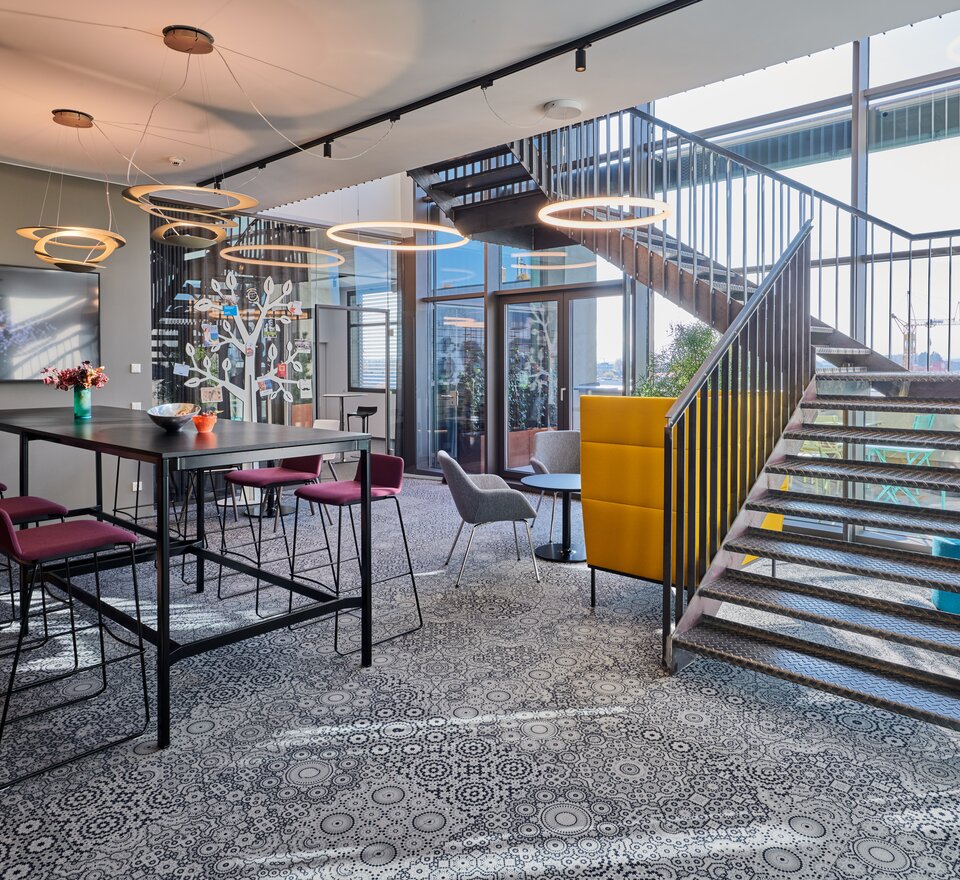Strictly private! Confidentiality, privacy and the security of their buildings or rental properties go without saying for most companies. After all, who wants to show their business hand? Nevertheless, the dogma of absolutely protected company buildings and office spaces is about to be broken down. Companies and organisations are increasingly offering shared offices, which create a partial public sphere. We show you how this can be implemented in practice using three examples.
Creative breeding grounds.
Little space available and high rents are increasingly leading to several companies sharing office space in partnership - so-calles shared offices. The internal organisation for this requires a zoning concept that combines shared areas such as a working café, small kitchen or meeting rooms with clearly assigned work areas, so that each company can also preserve its privacy.
The Dutch company Broeinest has just opened its fourth location in Utrecht. Broeinest, in English "breeding ground”, is a crossover concept consisting of an office, showroom, coworking and creative space. Broeinest leases to partner companies that share the premises. It also showcases itself to external architects, who can use the creative breeding ground as a playground for material tests, interior products or tools.
Designerwerkschau in Munich is similarly organised. As a shared showroom, it opens its doors to an audience interested in architecture and design and organises a series of events on its premises.
Coworking spaces as shared offices.
Originally, the trend towards coworking was intended as a modern and cost-effective contact point for freelancers and start-ups: people who do not work together directly, but who can use mutual synergies through the shared and inspiring workspace. At the same time it forms a community, fulfilling the important social tasks of people being together. This community spirit is clearly evident in the Czech Impact HUB. The coworking centre in the heart of Prague has been a contact point for aspiring start-ups for many years.
In the meantime, more and more companies are setting up and using their own coworking spaces, even within their own organisations: They allow employees to work together with external freelancers and crowd workers, form temporary project teams and create retreats for meetings. Collaboration is encouraged and the spontaneous sharing of ideas is virtually stimulated! Shared offices offer a lot of freedom in terms of design: industrial style or living room, lounge or open space, creative landscape or urban marketplace.
Reinterpreted foyer areas.
Foyers and entrance areas are taking on a completely new meaning more and more often, especially at larger company locations. They are being made "public" and available to an external audience. The classic reception area is transformed into a working café. The reception counter, a bar. Instead of "sitting and waiting" it’s now "meeting and working". The "café entrance" is a public zone – how public, that's something every company decides for itself. Guests and business partners, such as suppliers or customers, can make themselves comfortable here, spend time and prepare for their next appointment. Some companies even go one step further and open the entrance bar area to visitors who have nothing to do with the company. What's the point? Networking and branding, for example. Extended by a campus area, the foyer quickly becomes a fully-fledged event location.

